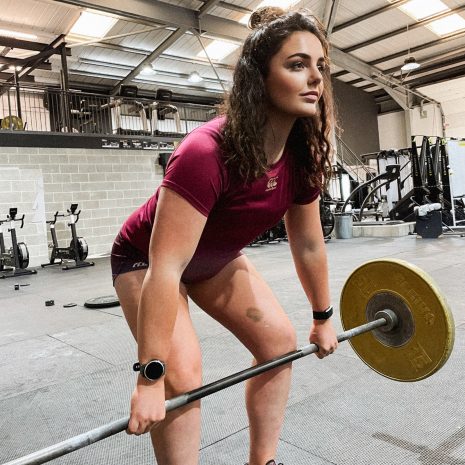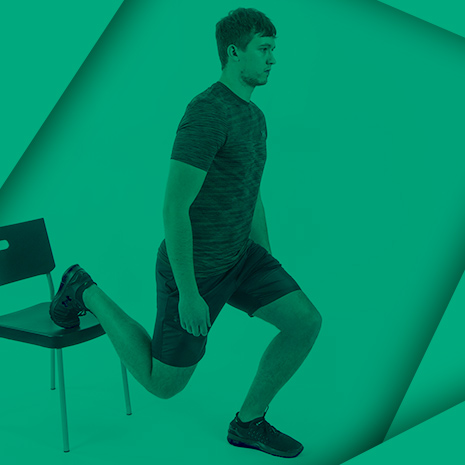We have teamed up with esteemed Chartered Physiotherapist, Neil Aitken to give you high-quality information on the most common Rugby injuries and how to best recover from them. If there’s a particular injury you’d like us to cover with Neil’s help, get in touch with us on social media (Facebook | Twitter).
Meniscus (Cartilage) or Ligament?
The most common injuries to the knee involve either the meniscus or one of the four ligaments in the knee. These are the anterior cruciate ligament (ACL), posterior cruciate (PCL), medial collateral (MCL) or lateral collateral (LCL). The meniscus are rings of cartilage that sit on the top of the tibia (shin bone) and act like a shock absorber within the knee joint as well as providing some stability to the knee. Most of the stability for the knee comes from the ligaments, along with the muscles that cross the knee joint. The anterior and posterior cruciate ligaments form a cross inside the knee, hence their name which in Latin means cross-shaped. The medial and lateral collateral ligaments support the inside and outside of the knee joint respectively.
How Can You Tell Which You Might Have Injured?
Meniscus:
An injury to the meniscus often involves a twisting motion, commonly while the knee is flexed. The cartilage does not have a good blood supply, meaning that it will not swell quickly. If you have injured your cartilage swelling usually builds up over the subsequent hours and you may not notice it until that night or even the next morning.
An injured meniscus will mean that it is very sore to perform a deep squat. More severe tears in the cartilage can lead to the knee locking or giving way. True locking is where you cannot straighten the knee fully due to the torn piece of cartilage blocking the movement. You may find that twisting your lower leg back and forth frees the movement. Giving way is again due to the piece of torn cartilage. If this is happening you should seek medical advice as a referral to orthopaedics may be required.
Less severe meniscus injuries without locking or giving way will usually settle with time and rehab. You may have previously heard of people having keyhole surgery to perform a ‘wash out’ of the knee. This is much less common now as this procedure did not always have good outcomes.

Ligaments:
In contrast to the cartilage, ligaments have a very good blood supply and will therefore bleed profusely when injured. Your knee will swell very quickly and can literally balloon up. If this is the case you should seek medical attention.
As with all ligament injuries they are classified into grade I, II or III. A grade one injury involves pain but no instability. A grade II involves some instability but the ligament has not completely ruptured. A grade III involves a full ligament rupture and the stability of the knee has therefore been compromised.
It is necessary to be assessed by a physiotherapist or doctor to assess the severity of your injury. Grade I or II injuries will usually settle themselves with time and rehab. A grade III tear will require orthopaedic opinion as surgery may be required.
Recovering From Your Knee Injury
Non-Operative Rehabilitation

- The early stages of recovery involve the PRICE regime to control swelling, namely protection, rest, ice, compression and elevation. Protection could be in the form of a knee brace. If you can weight bear and walk normally this is encouraged. If you are limping then using a crutch may be beneficial until you can walk normally.
- It is important to maintain the range of motion of the knee joint. This should involve bending and straightening the knee as pain allows. Exercises for the quadriceps, hamstrings and calf are also important as they all cross the knee joint and provide stability to the knee.
- Non impact cardiovascular exercises such as the static bike or elliptical trainer could be started before impact activities such as running.
- Proprioceptive (balance) exercises should also be used when re-training the stability of the knee.
- End stage rehab should involve plyometric training such as jumping and bounding.
- Running should be progressed from straight line jogging, to increasing speed and introducing twisting/turning/cutting movements.
As a general guide the first 2-3 weeks of recovery involve controlling swelling, improving range of motion, early strengthening and balance exercises. Depending on the severity of the injury and the progress being made you may be able to introduce non impact cardio and higher level strengthening exercises at week 2-3. If it is progressing well you may also begin to run at the 2-4 week stage. From weeks 4-6 plyometrics and further running drills can be utilised. Return to play should not be considered until your knee has no reaction to plyometric exercises and running drills. This is a general guide and the timescale may vary depending on your injury.
Post-Operative Recovery
There are different protocols to follow depending on which structure you have injured and the type of operation that is required. You will be given clear guidelines to follow for your rehabilitation following your surgery. It is very important to rigorously rehabilitate the injured leg and in fact your whole body before considering returning to play. Do not fall into the trap of half-heartedly performing your rehab or returning to play too early. You will be likely to suffer another injury if you do.
Here are the general guidelines for timescales for return to play:

Anterior Cruciate Ligament reconstruction: 9-12 months
Posterior Cruciate Ligament reconstruction: 9-12 months
Medial Collateral Ligament repair: 6-9 months
Lateral Collateral ligament repair: 6-9 months
Meniscus repair: 5-6 months
As always this information is a guide only. You should seek medical attention from a physiotherapist or a doctor for any such injuries. You may have complicating factors and your rehabilitation should be under close guidance from a physiotherapist.
ABOUT THE AUTHOR
Neil Aitken is a Chartered Physiotherapist with a private clinic in Edinburgh. He has previous experience as a senior physiotherapist in the NHS and provided physio for one of the top amateur rugby teams in Scotland. He is highly evidence-based having completed a Post Grad in Musculoskeletal Physiotherapy gaining membership to the MACP, one of the most highly respected qualifications within physiotherapy.
Website: http://www.neilaitkenphysio.co.uk/
Facebook: https://www.facebook.com/neilaitkenphysio/
Twitter: @aitkenphysio

Please note, this article is intended to serve as a guide for general information only. Injuries should be assessed by a qualified specialist such as a physiotherapist or doctor. When you sustain an injury, there are always complicating factors that may need to be assessed and addressed by a professional.




Comments